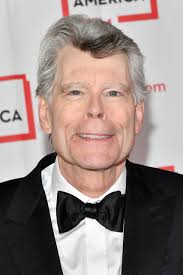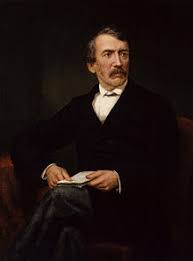Hi my dear friends, today "a short story" for you to read during these Christmas Holidays! It is a tribute to all actors and actresses around the world because I love theatre and the work they do! They are all fantastic! I hope you'll like it!
Hola mis queridos amigos, hoy "un relato corto" para que leais durante estas Fiestas Navideñas. Es un homenaje a todos los actores y actrices de todo el mundo porque ¡Me encanta el teatro y el trabajo que hacen! ¡Son fantásticos! Espero que os guste.
Info: from Speak Up magazine.
Photos: www.amigosdelreal.es / www.teatro.real.es / 20minutos.es
THE THEATRE OF LIFE by Talitha Linehan
It was time for Arjun to rejoin the ensemble. It had been a long time since his last performance and he was ready for a new one. He knew this would be one of his last acts. He was preparing to retire from the Theatre of Life.
"I want to be powerful and beautiful," Benson was saying , as Arjun joined the other players. Benson was the newest member of the ensemble and was planning to play a rich woman in his next performance.
In his last show, he had played a businessman who had defrauded his clients and then murdered a colleague to cover up his crime, before eventually being arrested and imprisoned.
"I'll do better this time," said Benson, who always abandoned his script midway through every gig and improvised, something that was acceptable but not encouraged. Almost all new players improvised . They couldn't resist the temptation to satisfy every instinct, regardless of the consequences for themselves or the other players.
Arjun greeted the members of the ensemble, some of whom he hadn't seen in a long time. They all introduced themselves by the names they'd had in their last performance, a customary practice in the Theatre of Life.
Every recital revolved around an extended circle of family and friends, whose lives intersected in various ways. In his last perfromance, Arjun had played a humble pastor who'd dedicated his life to helping pthers.
He'd evolved through his work and his personal difficulties -he'd lost his wife in a car accident only months after they'd married- and after the acto, he'd taken some time out to reflect on his role.
Now Arjun was about to play a man again, but this time he would have to overcome a childhood deprived of love. It was important for the players to be assigned diverse roles throughout their time with the theatre. They all played people of both genders and of various ethnicities, religions, sexual orientations, and levels of intelligence, materialism, and success. Every time they faced at least one important challenge.
In his early performances, Arjun's biggest challenge had been related to a loss that had impacted his ego; loss of power or material possessions, for example. But in his recent ones, he'd suffered more emotional and spiritual loss.
While playing a pastor, for example, after his wife had been killed, he'd questioned the existence of God and almost lost his faith. He'd adhered to his script, however, and experienced a spiritual evolution that had helped him to help others.
"I don't want to play an addict again," said Imani, and threw aside her script. She was another of the newer members of the ensemble and had always improvised.
The group's leader, Saul, who'd retired from the Theatre of Life and the returned to lead it, spoke up. He said: "Once you can demonstrate to us that you can stick to the script and overcome your addiction, you'll never have to play an addict again".
The other players joined him in encouraging her. "Come on, you can do it this time". "We will all be there for you." "We will help you in whatever way we can". "You say that everytime ," said Imani, "but you never help me enough."
"We can only do so much," said Saul. "You are the master of your performance."
If you say so, said Imani.
Arjun put out a hand out to comfort her. He remembered when he was new to the Theatre of Life. He'd ended early because he hadn't liked the role he'd been assigned, but he'd finally learned to adhere to the script and to evolve as a player.
"It takes time," Arjun told Imani. "We were all where you are at one point."
He read through his own script, which was a general guideline of how the performance should progress -the actions he was to take, the challenges he was to overcome, and the interactions he was to have with the other players.
"This won't be an easy one," said Arjun. "The best ones never are," said Saul. "But you are ready for it now, my friend. Your time with us will soon come to an end."
Some of the players went on stage before Arjun, and some of them would begin after him. When the time came for his turn, the remaining players came to see him off.
"Good luck, old friend!" "Break a leg!" "See you on the other side."
These were the last words Arjun heard as he stepped into the portal to begin nis new life on Earth, where he would forget who he really was ant that his life was simply a performance, one through which he was to learn and evolve and from which he would soon transcend.
*****************************
VOCABULARY
-TO REJOIN: reunirse / -ENSEMBLE: grupo / -ACTS: actuaciones -TO COVER UP: encubrir /-EVENTUALLY: finalmente / -GIG: espectáculo / -REGARDLESS: sin importar / -CUSTOMARY: habitual / -TO REVOLVE AROUND: girar alrededor / -HUMBLE: humilde / -TO OVERCOME: ssuperar / -DEPRIVED: privada. / -YO THROW ASIDE: deshacerse de , tirar / -TO SPEAK UP: alzar la voz, hablar claro / -TO PUT OUT: extender / -TO SEE OFF; despedir / -BREAK A LEG: mucha suerte / TO STEP INO: entrar.


















































